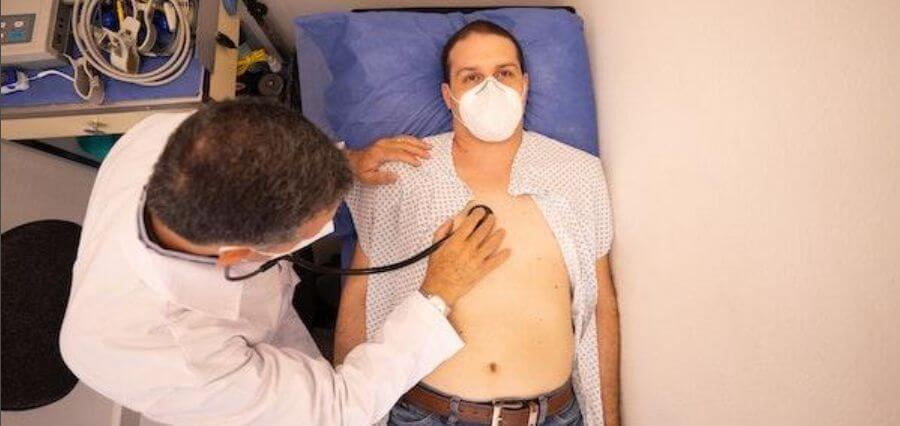In the early days of cardiology, many treatments were done manually. This included palpating the radial pulse to check for aortic regurgitation and auscultating the heart to listen for mitral stenosis. With technology advancing at an unprecedented rate, numerous imaging techniques and devices now facilitate diagnoses and improve patient outcomes. We will explore some of the key ways technology has changed cardiology for the better.
Improved Imaging Techniques
In the past, cardiologists relied heavily on X-rays to visualize the heart and its structures. While this was helpful, it did have some limitations. For example, certain heart conditions could not be detected using X-rays alone. However, cardiologists can now obtain more detailed heart images with the advent of computed tomography (CT) scanning and magnetic resonance imaging (MRI). This has led to improved diagnoses and treatments for various cardiac conditions.
CT scans provide clear pictures of the heart, its chambers, and the coronary arteries. MRI is especially useful for detecting abnormalities in the valves and myocardium (heart muscle). These advanced imaging techniques have helped cardiologists better understand and treat heart conditions. Craft Body Scan, along with these techniques, detects the smallest irregularities and ensures that sudden disease does not take you by surprise.
Minimal Invasive Procedures
In the past, many cardiac procedures were invasive and required a large incision in the chest. This was often associated with a lengthy recovery period. Thanks to technological advances, cardiologists can now perform many minimally invasive procedures. This includes angioplasty, stenting, and valve repair/replacement.
Minimally invasive cardiac procedures are performed using small incisions and special catheters or tubes. These procedures are often less painful and have a shorter recovery time when compared to traditional open-heart surgery. Minimally invasive techniques have helped improve patient outcomes and quality of life following cardiac procedures.
Cardiac Devices
Cardiac devices are another area where technology has made a big impact. These devices include pacemakers, implantable cardioverter defibrillators (ICDs), and left ventricular assist devices (LVADs). Pacemakers are small devices implanted under the skin to help control abnormal heart rhythms. ICDs are similar to pacemakers but can also deliver electrical shocks to the heart if needed. LVADs are mechanical pumps that help pump blood from the heart’s left ventricle.
These devices have helped countless patients with cardiac conditions live longer and healthier lives. In addition, they continue to be improved upon as technology advances, making them smaller, more durable, and more effective.
Finding Jobs in Cardiology
Technology has also changed the cardiology job market. In the past, most cardiologists worked in private practices or hospitals. However, with the rise of telemedicine, many cardiologists now work remotely. This allows them to consult with patients via video conferencing and provide care from afar.
Telemedicine has enabled cardiologists to reach a wider patient base, freeing up time that would otherwise be spent commuting to and from appointments. This has made it easier for them to find cardiology jobs that fit their lifestyles and schedules.
Controlling Cholesterol
High cholesterol is a major risk factor for heart disease. In the past, cardiologists had few options available to them when it came to treating high cholesterol. However, with the development of statins, they now have a powerful tool to help control cholesterol levels.
Statins are a type of medication that blocks an enzyme in the liver responsible for producing cholesterol. This helps reduce the amount of LDL (bad) cholesterol in the blood and lowers the risk of heart disease. Statins are effective in reducing LDL levels and preventing heart attacks and strokes. They are often used as a comprehensive treatment plan for high cholesterol.
Virtual Reality for Diagnosis and Treatment
Virtual reality (VR) is another area where technology is beginning to impact cardiology. VR simulations can provide cardiologists with a realistic way to learn and practice new procedures. VR has also been used to help cardiologists better understand complex cardiac conditions. In the future, VR may provide patients with personalized care plans and treatments. VR holds great potential for cardiology, and its use is likely to increase in future years.
Conclusion
Technology has changed the cardiology field in many ways. Technology has greatly impacted how cardiologists practice medicine, from minimally invasive surgery to cardiac devices and telemedicine. Technology will continue to shape cardiology in the coming years, and its impact will only become more apparent.


